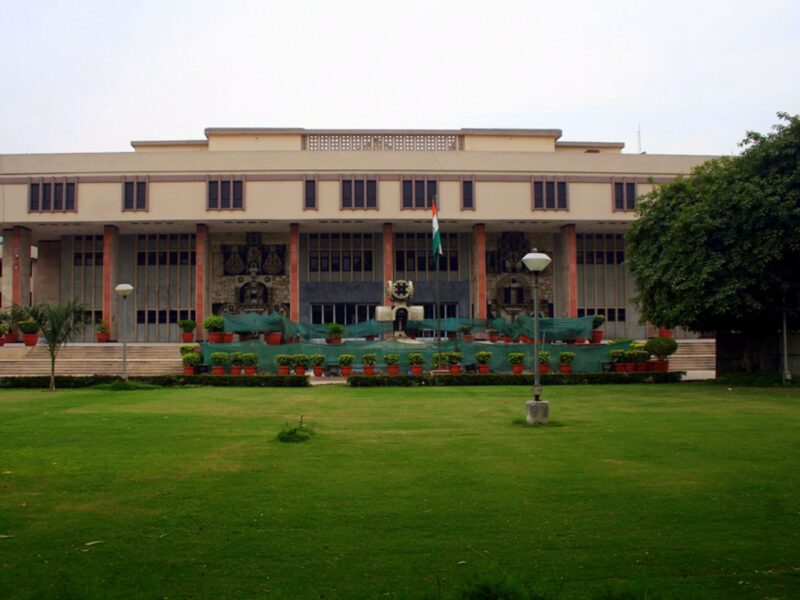Cloud seeding: As Delhi prepares for five cloud-seeding trials aimed at tackling its toxic air, experts are voicing strong concerns over the potential environmental and health risks involved. The weather modification technique—designed to induce artificial rainfall by dispersing chemicals such as silver iodide, potassium iodide or sodium chloride into clouds—may help settle airborne pollutants and temporarily improve air quality.
However, the use of silver iodide, classified as a hazardous substance, has sparked debate, with critics highlighting the lack of long-term studies on its cumulative impact, particularly in densely populated urban settings.
Speaking to Patriot, Pushkar Pawar, a town planner with the Municipal Corporation of Delhi (MCD), said cloud seeding could be beneficial in areas facing drought or water shortages. It could help increase rainfall, replenish reservoirs, and support agricultural irrigation.
“Additionally, cloud seeding can be employed to reduce storm intensity and minimise hail damage in certain areas,” he said. For regions affected by erratic rainfall due to climate variability, Pawar noted, the technique could serve as a useful short-term water management tool.
Also read: Yamuna river pollution spikes despite clean-up push
Environmental and health risks under scrutiny
Despite its potential benefits, experts remain sceptical about the unintended consequences of cloud seeding—particularly the environmental and health risks posed by silver iodide. While effective in encouraging cloud condensation, silver iodide is classified as hazardous in high concentrations. Repeated or large-scale use could lead to its accumulation in soil and water bodies, potentially harming aquatic ecosystems, degrading soil quality and affecting biodiversity.
Although studies suggest that the levels used in cloud seeding are typically low and not immediately harmful, there is insufficient long-term research on the cumulative ecological effects—especially in densely populated urban environments like Delhi.
Another critical concern, said Pawar, is the potential impact of cloud seeding on human health. He explained that although the chemicals are typically dispersed in small quantities, there remains unease about prolonged exposure to silver compounds, particularly silver iodide.
“Chronic exposure to silver can cause a range of health issues, including respiratory problems, skin irritation, and in rare cases, a condition called argyria, which occurs due to the accumulation of silver in the body,” he said.
Pawar added that indirect health risks may arise if these chemicals contaminate drinking water sources or accumulate in crops, posing threats to food safety and human health through consumption of contaminated water or food.
He also cautioned against the ethical and ecological consequences of altering natural weather patterns, noting that artificial rainfall may disrupt regional precipitation. “Cloud seeding could reduce rainfall in neighbouring areas, potentially leading to droughts and ecological imbalances,” he said. “Such impacts could lead to legal disputes, especially if one area benefits from artificial rainfall while another suffers from its absence.”
Activists, scientists call it a flawed approach
Environmental activist Bhavreen Kandhari criticised the initiative as a “complete waste of public funds,” likening it to other short-term measures such as smog towers, water sprinkling and anti-smog guns. She argued that these initiatives fail to address the root causes of pollution, especially PM 2.5 emissions.
“Cloud seeding without fixing systemic emission sources reflects the same flawed, directionless approach,” Kandhari said. “Not only is the science around cloud seeding deeply uncertain, but its potential environmental and health risks—chemical exposure, water contamination, and disruption of ecosystems—make it a dangerous distraction from the urgent need for grounded, source-based pollution control.”
Bhim Singh Rawat, Associate Coordinator at the South Asia Network on Dams, Rivers and People (SANDRP), echoed this concern. “It’s quite surprising that just five months back, domain experts from government agencies, including the India Meteorological Department (IMD) and the Ministry of Environment, Forest and Climate Change (MoEF&CC), stated in Parliament that cloud seeding is not feasible in Delhi due to atmospheric conditions and other factors,” he said.
Rawat added that experts had then also raised concerns about the chemicals used. “Nothing has changed in the past five months. There is still no study or scientific analysis recommending or validating the feasibility of this idea now,” he said.
He further noted that experts with years of data have pointed out the absence of moisture-laden clouds in Delhi during winter, making cloud seeding impractical in the peak air pollution season. “They have clearly stated that other atmospheric conditions too are not conducive to cloud development,” he said. “Given the vast scale of the pollution problem, continuous rainfall would be required over a large area—something that cannot be achieved through these experiments.”
Rawat also referred to previous failed initiatives. “We have seen the smog tower experiments fail. The water sprinkler initiative had limited impact. Similarly, there are several question marks on the cloud seeding option,” he said.
“There are multiple human-caused pollution sources aggravating the air quality crisis in the national capital during winter. These require long-term, sustained efforts at the regional level. It must begin with fixing the accountability of each and every concerned government department,” Rawat added.
Delhi government prepares for five trials
A Delhi government official said five cloud-seeding trials are being planned, each scheduled on a separate day. The aircraft involved will operate for around one to one-and-a-half hours to inject rain-inducing chemicals into suitable clouds. Depending on favourable weather conditions, all five trials may be conducted within a week or spaced a day or two apart.
“If the right weather patterns emerge, all five trials may be completed within a week or spaced a day or two apart. Cloud availability will guide the final schedule,” the official explained.
The Indian Institute of Technology (IIT) Kanpur is spearheading the initiative, handling both planning and execution. Trial sites will be selected based on scientific and logistical criteria. Due to safety concerns and airspace restrictions, cloud seeding will not be conducted over central areas like Lutyens’ Delhi or near the Indira Gandhi International Airport.
Instead, the operations will take place on the city’s outskirts. Each flight is expected to last between one and one-and-a-half hours. The first trial is likely to be held by the end of May or in June, depending on weather conditions.
On May 7, the Delhi Cabinet approved the cloud-seeding proposal, allocating a total budget of Rs 3.21 crore. This includes Rs 2.75 crore for the five trials (Rs 55 lakh per trial) and Rs 66 lakh for initial setup costs, such as equipment calibration and logistics.
The government is currently seeking no-objection certificates (NOCs) from 13 central departments, including the Directorate General of Civil Aviation (DGCA), the Ministry of Defence, and the Airports Authority of India (AAI).





